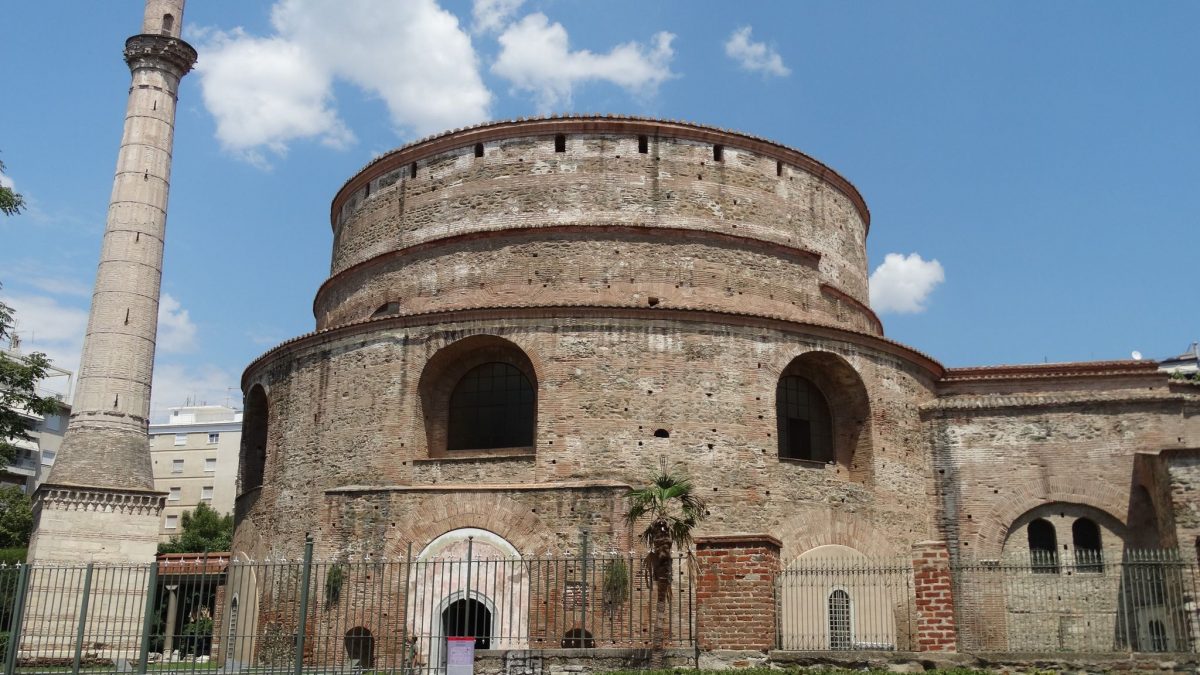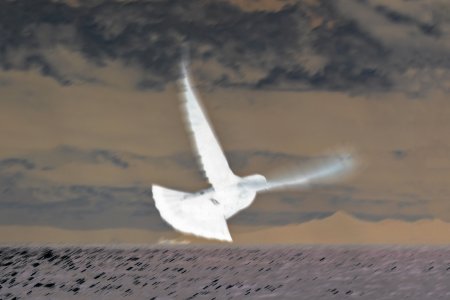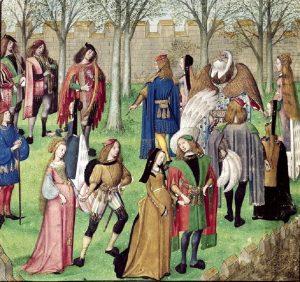
Μ. Τρίτη: Το τροπάριο της Κασσιανής
27 Απριλίου 2021
Οστεοπόρωση και Διατροφή
28 Απριλίου 2021Συντάκτης : Δημήτρης Λιάρος. ‘
Όλες οι φωτογραφίες είναι από το προσωπικό αρχείο του Κου Λιάρου.
Επιμέλεια άρθρου : Μίνα Μέρμηγκα
Κτίστηκε στα χρόνια του καίσαρα Γαλερίου, γύρω στα 306 μ.Χ., ως ναός του Δία ή του Κάβειρου ή κατ΄ άλλους ως Μαυσωλείο του ιδίου. Στον άξονά της κατέληγε πομπική οδός που συνέδεε τη θριαμβική αψίδα του Γαλερίου με το ανακτορικό συγκρότημα, που έχει ανασκαφεί νοτίως της Εγνατίας οδού.
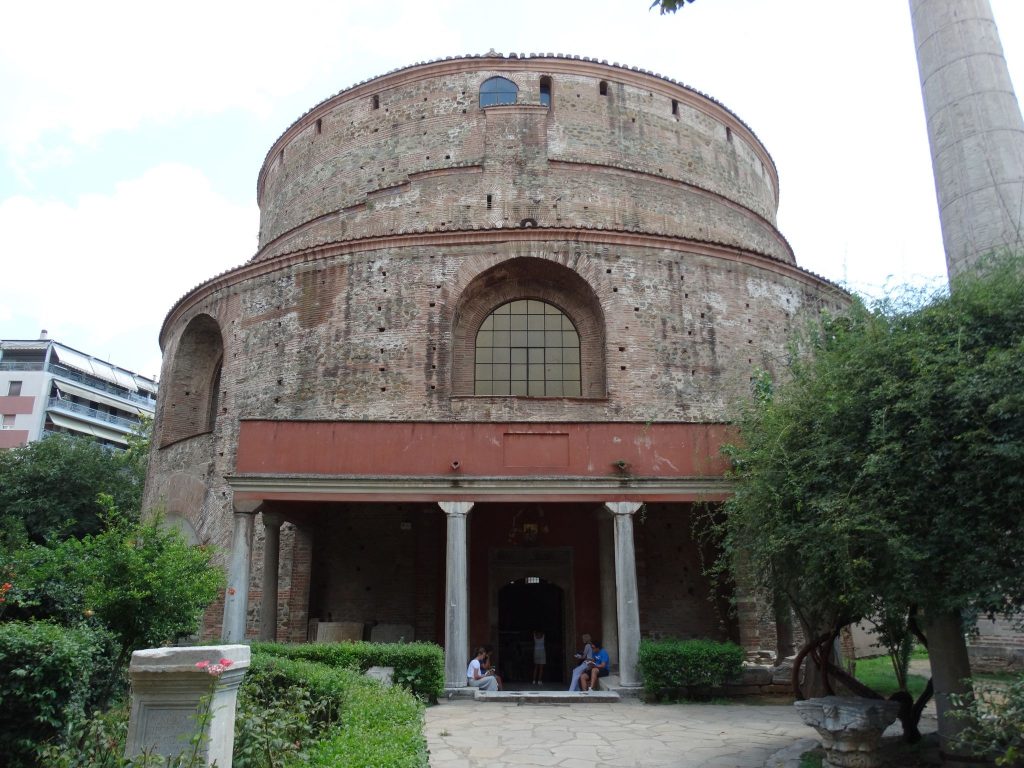
Το κτήριο, διαμέτρου 24,50μ καλύπτει ισοδιάστατος θόλος από οπτόπλινθους, που φθάνει σε ύψος τα 29,80μ.. Ο κυλινδρικός τοίχος, πάχους 6,30μ., διασπάται εσωτερικά σε οκτώ ορθογώνιες κόγχες, από τις οποίες η νότια αποτελούσε την κύρια είσοδο.

Η μετατροπή του σε χριστιανικό ναό, αφιερωμένο πιθανότατα στους Ασωμάτους ή Αρχαγγέλους, συντελέστηκε στη διάρκεια των παλαιοχριστιανικών χρόνων, άγνωστο πότε ακριβώς. Την ίδια περίοδο διανοίχθηκε και διευρύνθηκε η ανατολική κόγχη και κατασκευάστηκε το ιερό βήμα, ένας ορθογώνιος χώρος με ημικυκλική αψίδα στα ανατολικά.

Γύρω από το κτήριο προστέθηκε κλειστή στεγασμένη στοά (πλάτους 8μ.) που επικοινωνούσε με τον κεντρικό χώρο μέσω επτά κογχών που διανοίχθηκαν στον αρχικό πυρήνα. Στη δυτική κόγχη διαμορφώθηκε νέα είσοδος με νάρθηκα και προστέθηκε πρόπυλο με δύο παρεκκλήσια, ένα κυκλικό ανατολικά και ένα οκταγωνικό δυτικά. Καμία από τις παραπάνω προσθήκες, με εξαίρεση τη διαμόρφωση της ανατολικής κόγχης, δεν σώζεται σήμερα.
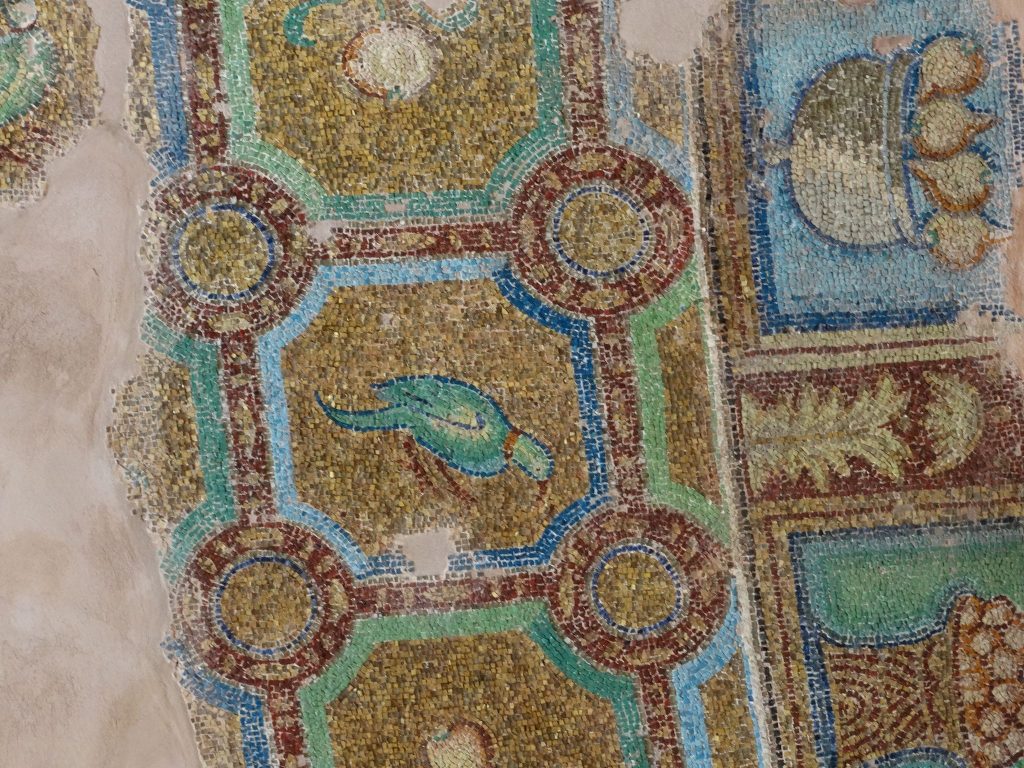
Τα λαμπρότερα όμως λείψανα από την παλαιοχριστιανική φάση του μνημείου είναι τα εξαίρετης ποιότητας ψηφιδωτά. Τις φωτιστικές θυρίδες και τα εσωρράχια των καμαρών στη βάση του θόλου κοσμούν ψηφιδωτά, των οποίων ο πλούτος των θεμάτων με φυτικά και γεωμετρικά μοτίβα και η λαμπρότητα των χρωμάτων εντυπωσιάζει. Στο θόλο αναπτύσσονταν οι μεγάλες συνθέσεις σε τρεις επάλληλες ζώνες.
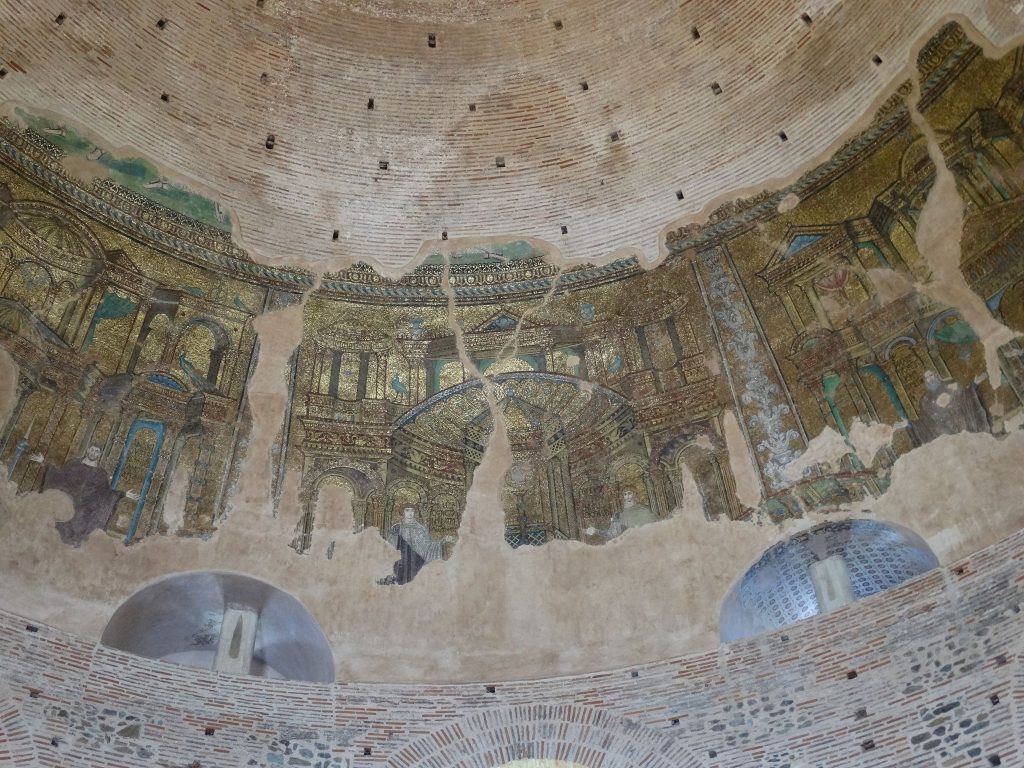

Η χαμηλότερη, γνωστή στη βιβλιογραφία και ως ζώνη των μαρτύρων, διαιρείται σε οκτώ διάχωρα, στα οποία εικονίζονται δεόμενοι μάρτυρες μπροστά από μνημειακά αρχιτεκτονήματα. Στο ανατολικό διάχωρο που καταστράφηκε όταν κατέρρευσε το εκεί τμήμα του θόλου, τα κατεστραμμένα τμήματα του ψηφιδωτού συμπληρώθηκαν με τοιχογραφία από τον ιταλό ζωγράφο S. Rossi το 1889. Η μεσαία ζώνη των ψηφιδωτών του θόλου είναι σχεδόν κατεστραμμένη.
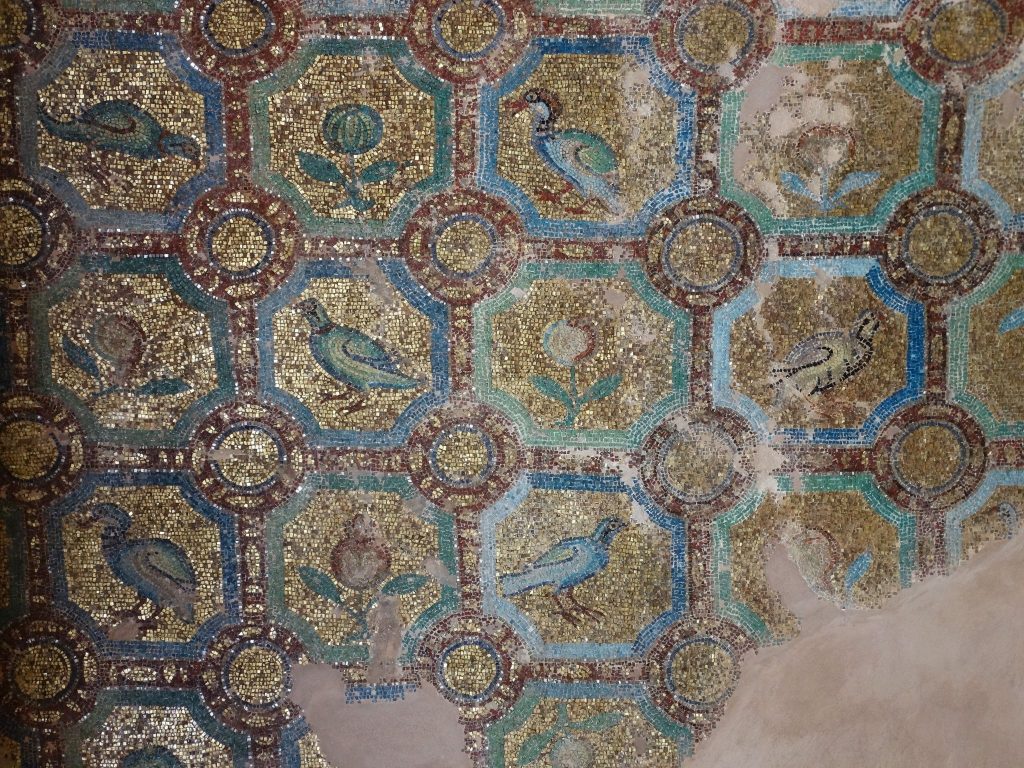
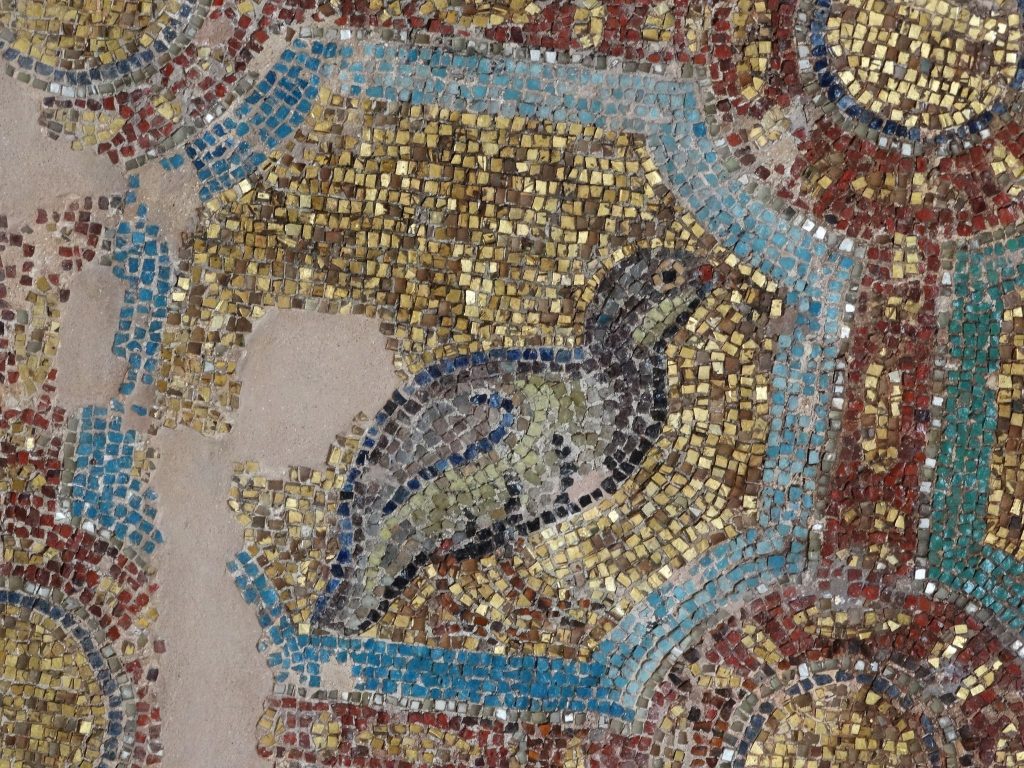
Σώζεται μόνο το κατώτατο τμήμα, όπου διακρίνονται πάνω στο έδαφος πόδια ανδρικών μορφών σε έντονη κίνηση, πιθανότατα αγγέλων. Από την ψηφιδωτή παράσταση της τρίτης ζώνης σώζονται τα κεφάλια τριών εκ των τεσσάρων αγγέλων που ανακρατούν τριπλή ”δόξα” από πολυποίκιλτα στεφάνια με πολυάκτινα αστέρια, πλοχμό με καρπούς και κλαδιά και πολύχρωμη ίριδα.
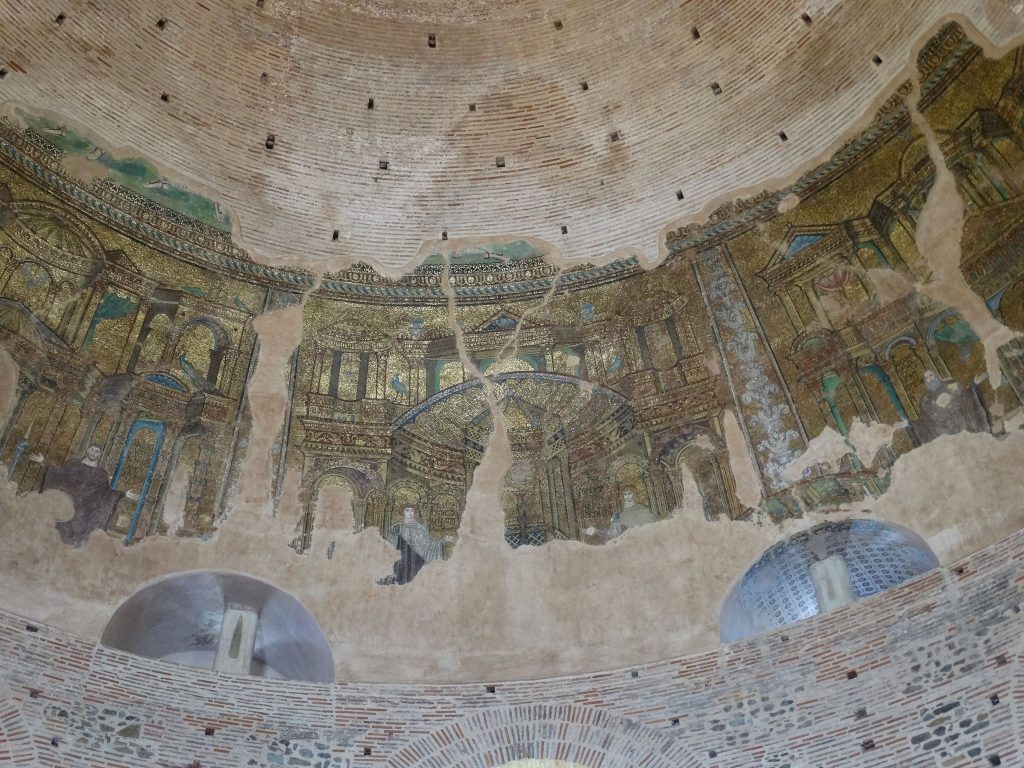
Μεταξύ των αγγέλων εικονίζεται το μυθικό πτηνό φοίνικας να προβάλλει πάνω σε ερυθρό ακτινοβόλο δίσκο. Στο κέντρο της ”δόξας” από την παράσταση του Χριστού σε χειρονομία θριάμβου διακρίνεται το προσχέδιο με κάρβουνο πάνω στις πλίνθους του θόλου.
Οι μεγάλης κλίμακας επεμβάσεις που έγιναν στο μνημείο κατά την παλαιοχριστιανική περίοδο επιβάρυναν τη στατική του επάρκεια. Οι σεισμοί των αρχών του 7ου αι. κατέστρεψαν την αψίδα του ιερού και το υπερκείμενο τμήμα του θόλου. Η αψίδα, μετά την αποκατάστασή της, ενισχύθηκε εξωτερικά με δύο αντηρίδες και διακοσμήθηκε τον 9ο αι. με την τοιχογραφία της Αναλήψεως.
Το 1590/1 μετατράπηκε σε τζαμί από τον Σεΐχη Σουλεϊμάν Χορτατζή Εφέντη.
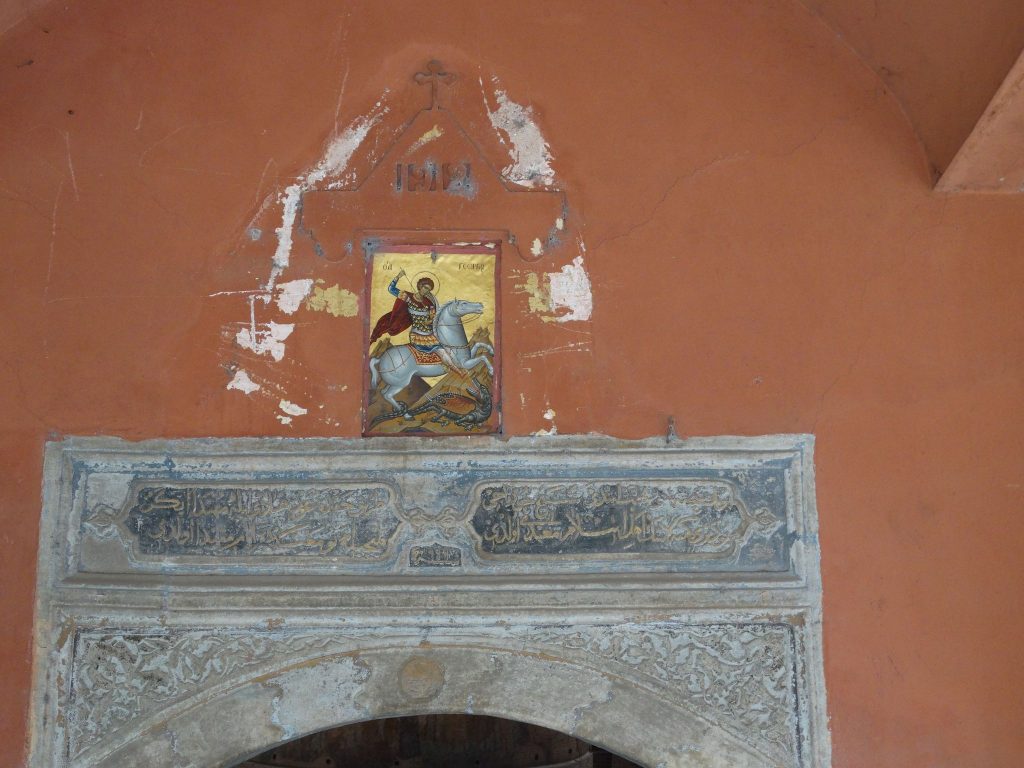
Οι σεισμοί που έπληξαν την πόλη της Θεσσαλονίκης το 1978, προξένησαν σοβαρές βλάβες στο μνημείο. Οι αναστηλωτικές εργασίες απαίτησαν μεγάλες επεμβάσεις στο κτήριο και τον διάκοσμό του, το μεγαλύτερο μέρος των οποίων έχει περατωθεί.
Πηγή:Υπουργείο Πολιτισμού και Αθλητισμού
http://odysseus.culture.gr
Μπορείτε να δείτε την αρχαιολογική ταινία “ΡΟΤΟΝΤΑ”, παραγωγής Εφορείας Αρχαιοτήτων Πόλης Θεσσαλονίκης, 2016, με την ιστορία του μνημείου και την ανάλυση της παράστασης των ψηφιδωτών
Στο δεύτερο σύνδεσμο μπορείτε να κάνετε μια 3D περιήγηση στη Ροτόντα!!
Rotunda of Galerius, Thessaloniki
The oldest monument in Thessaloniki, the Rotunda (also known as Agios Georgios) is a massive round building that was first a Roman mausoleum, then a Christian church, then a mosque. Its interior is decorated with Early Christian mosaics; outside is the city’s only surviving minaret.
The Rotunda was built by the Roman emperor Galerius (305-11) as part of a large palace complex in Thessaloniki. It was probably intended to be his mausoleum, but it was never used as such. The Rotunda of Galerius was converted into a Christian church in the late 4th century or mid-5th century. The date of conversion to a church has been difficult to determine with any certainty. There is no written documentation about the event, so dating has to be based on analysis of the style of the mosaics and the historical situation of Thessaloniki in these early centuries.
Thessaloniki flourished, and developed at a fast pace into the mid-6th century.
Many grand churches were built in this period (including Panagia Acheiropoietos, St. Demetrios and Hosios David), and so it seems a logical period for the Rotunda transformation and decoration as well.The Ottoman Turks ruled Thessaloniki from 1430, and in 1591, Agios Georgios was converted into a mosque. On the Islamic calendar it was the year 999, when the end of the world was expected by some. Fortunately, the mosaics that survived until then were not harmed further by this conversion; they were simply painted over.The Rotunda is an austere structure built entirely of brick on a circle-within-a-circle plan with 20-foot-thick walls. To transform it into a church, Thessaloniki’s Christians converted the southeast niche into an arch, added a sanctuary, moved the main entrance from the southwest to the northwest side, added a narthex, and built another ambulatory around the outside (which has not survived). The slender, freestanding Turkish minaret is the only one to survive in Thessaloniki.The dome mosaic is now lost entirely, but its subject is known from the fortunate survival of its underdrawing. It depicted Christ, dressed in imperial purple and seated or standing on a shield. He held a cross in his left hand and raised his right hand upwards. This is a notable example of the influence of imperial elements in Early Christian art – the Roman army would often proclaim an emperor by elevating him on a shield.
Golden mosaics with medallions of birds and fruit (restored 1885) decorate the southeast recess, and the apse vault bears a faded frescoof the Ascension from the late 9th century.
In this article you can see the photos from the author's archive of this article and in the following link you can see a 3D tour from the tax office of antiquities of Thessaloniki Follow us on Facebook
Ελάτε στην παρέα μας στο Facebook

